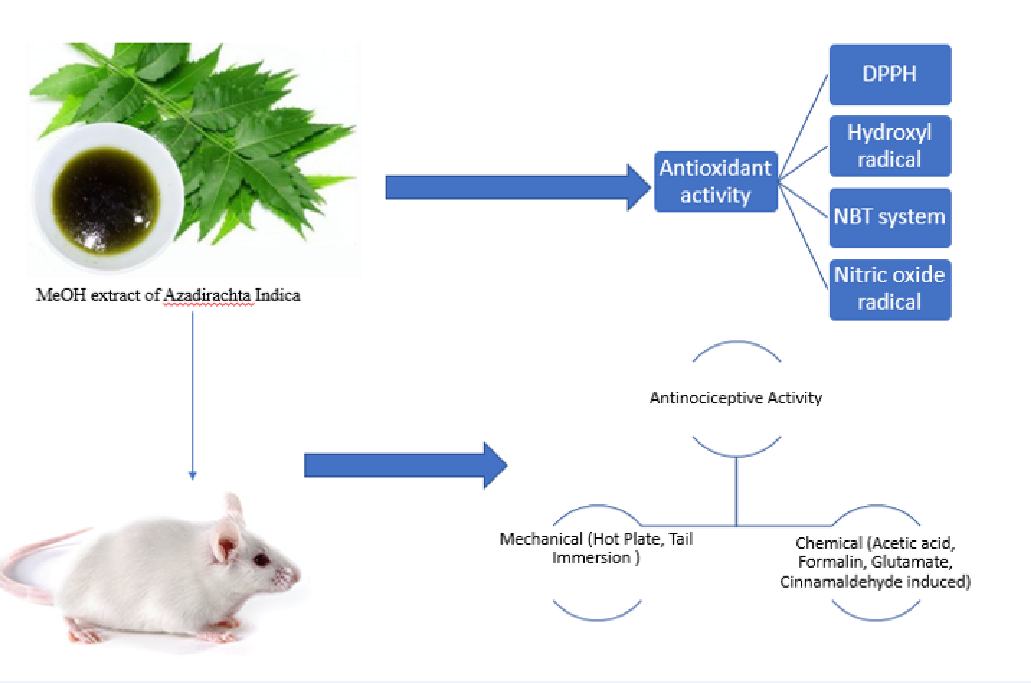Background: Azadirachta indica (Neem) is a communal plant of Meliaceae family called Neem Or Kadunimb in Maharashtra, India Neem stated anti-inflammatory through regulation of proinflammatory enzyme activities with COX and LOX enzyme. Previous studies show that Azadirachta Indica (neem) and its chief constituents play an essential role in anticancer management via the modulation of different molecular pathways including NF-κB, p53, PI3K/Akt, Bcl-2, pTEN, and VEGF. Many parts of the plant are traditionally used in the treatment of various pharmacological action, the analgesic activity of Neem Seed Oil has already reported but Neem Leaves. Methods: The antinociceptive activity of Azadirachta Indica Leaves (AZIL) was examined using heat-induced-mechanical (hot-plate and tail-immersion test) and chemical-induced (acetic acid, formalin, glutamic acid, cinnamaldehyde) nociception models in mice at 50,100, and 200 mg/kg doses. ATP-sensitive K+ channel pathway, cyclic guanosine monophosphate (cGMP) pathway and involvement of the opioid system were also tested using glibenclamide, methylene blue, and naloxone/morphine respectively. The methanolic extract of leaves of A.Indica was assessed by using different in vitro antioxidant models of screening like scavenging of 1,1-diphenyl-2-picryl hydrazyl (DPPH) radical, nitric oxide radical, superoxide anion radical, and hydroxyl radical. Results: AZIL showed antinociceptive activity and antioxidant activity. In both hot plate and tail immersion tests AZIL significantly increases the latency to the thermal stimuli. In the acetic acid-induced writhing test the extract repressed the number of abdominal writhing. Similarly, AZIL produced substantial dose-dependent inhibition of paw licking in both neurogenic and inflammatory pain induced by intraplantar injection of formalin. As well, AZIL also expressively withdrawn cinnamaldehyde-induced pain and the glutamate-induced pain in mice. It was also proved that pretreatment with naloxone significantly reversed the antinociception produced by AZIL in mechanical tests signifying the involvement of the opioid system in its effect. Furthermore, administration of methylene blue, enhanced AZIL induced antinociception while glibenclamide, an ATP-sensitive K+ channel antagonist, could not converse antinociceptive activity induced by AZIL. Conclusion: Based on the results of the present study it can be said that AZIL keeps significant antinociceptive activity which acts in both central and peripheral mechanisms.

